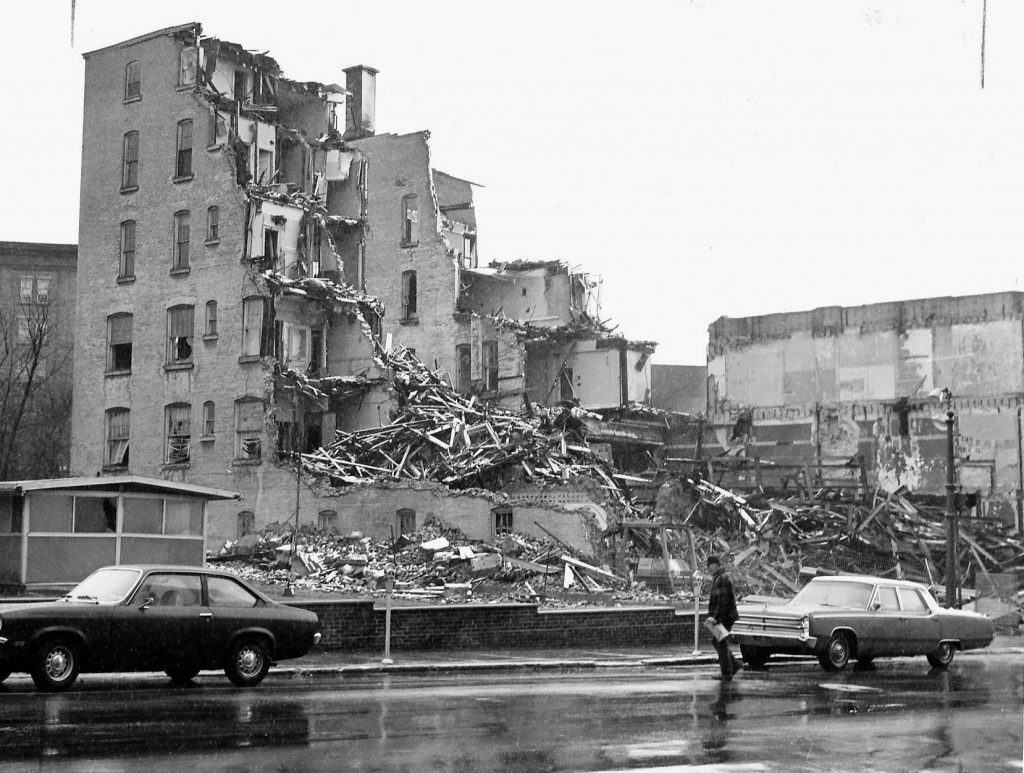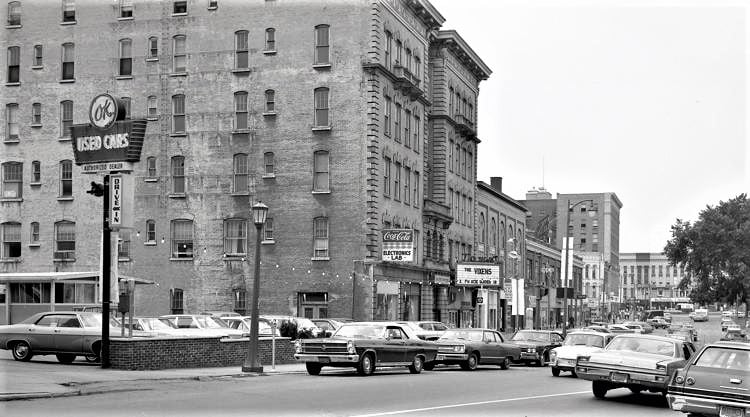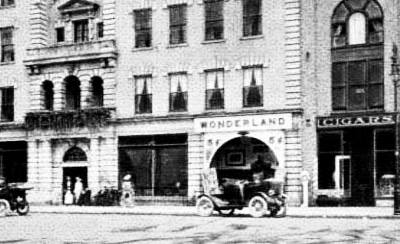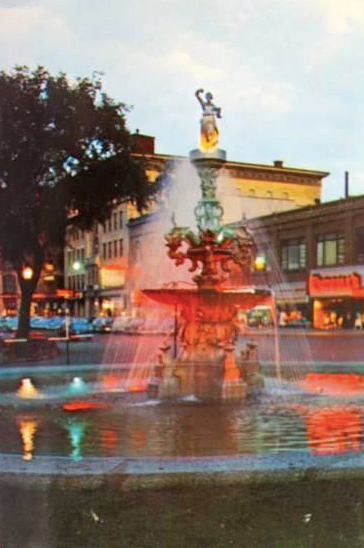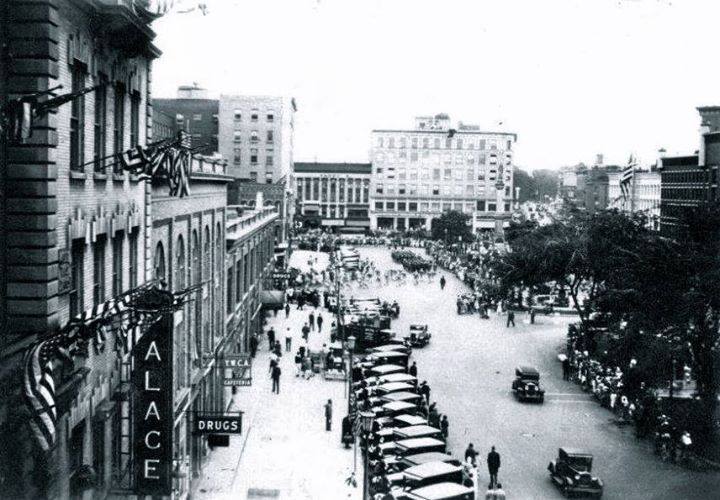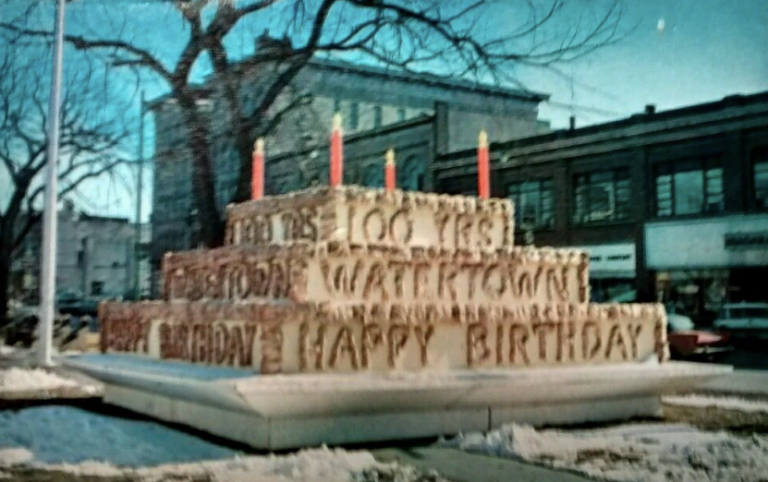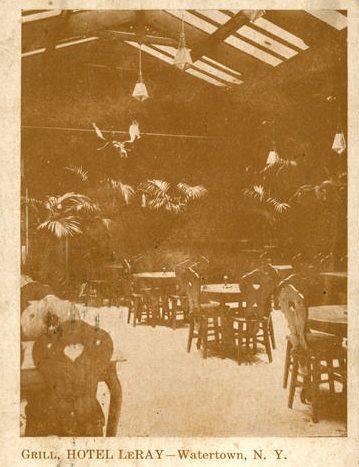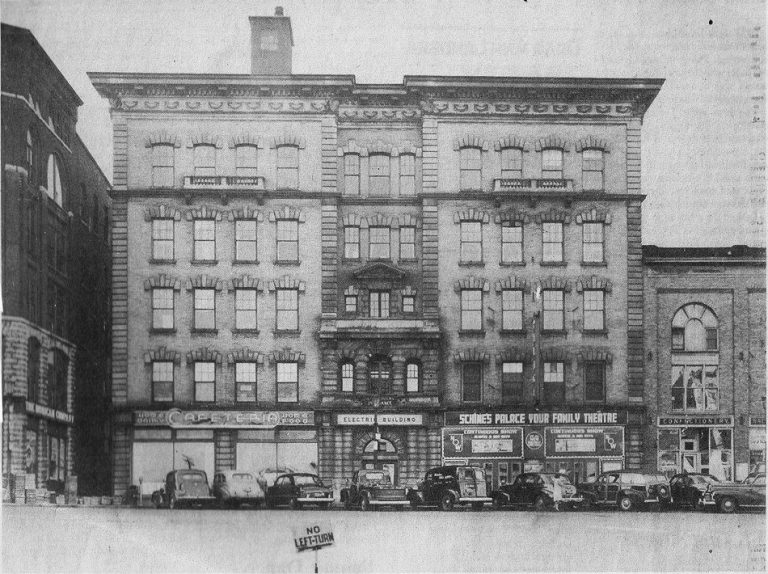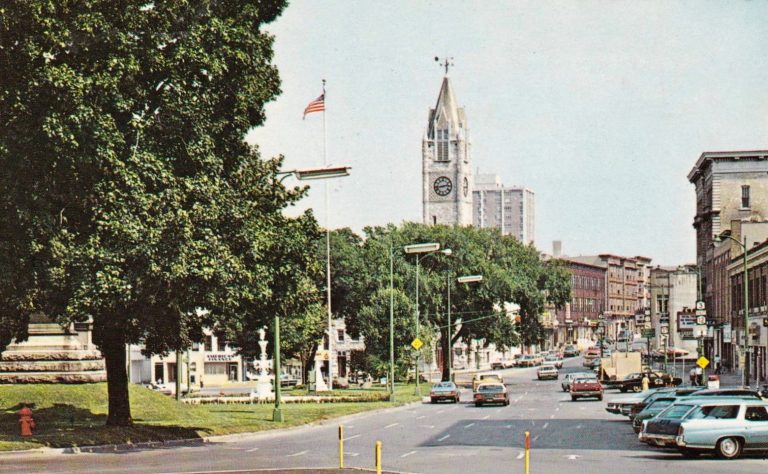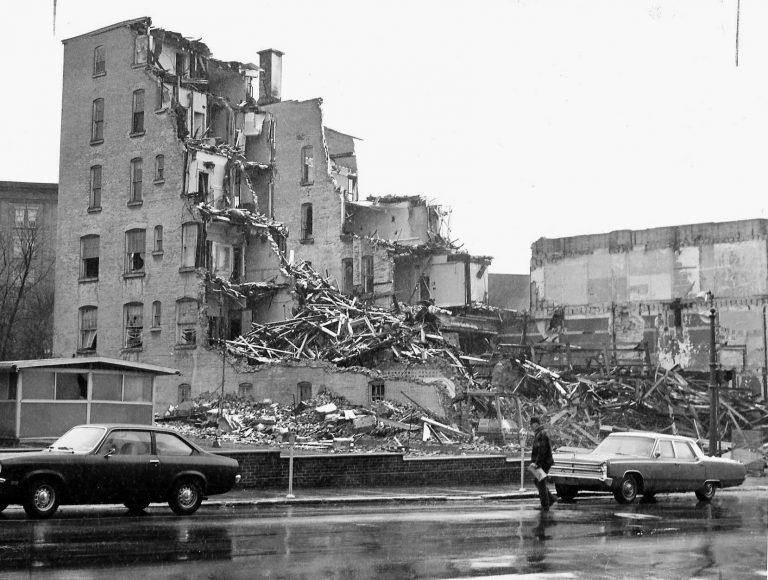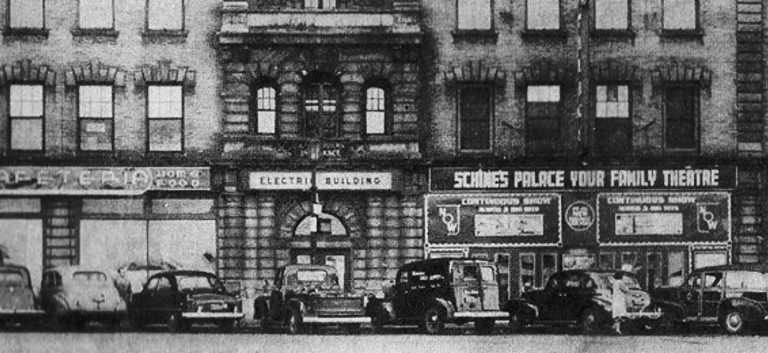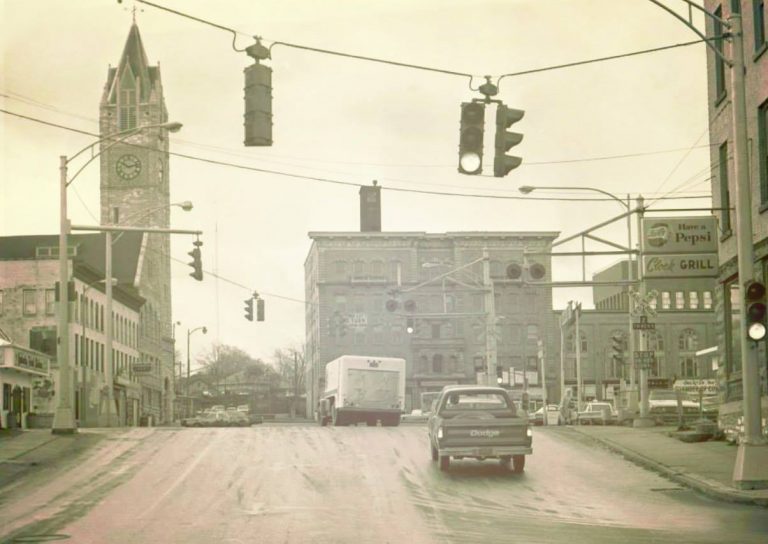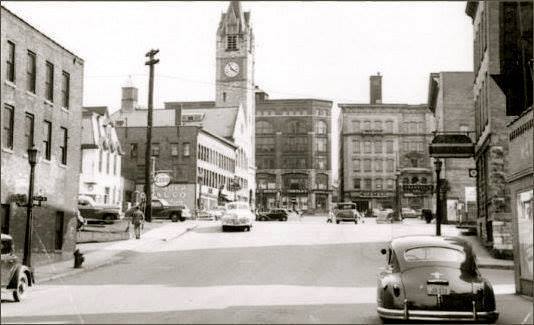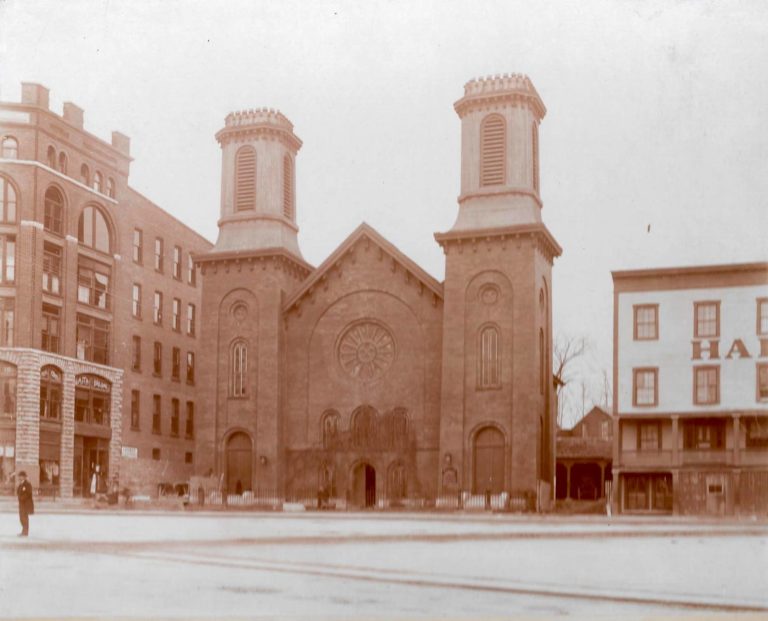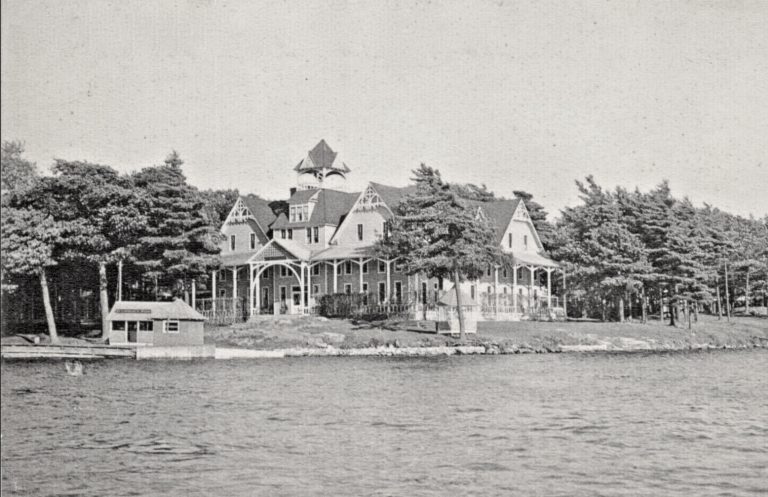The Electric Building Was Originally Built As Hotel LeRay
Construction on Hotel LeRay began in 1907, after the Universalist Church had moved to their new church, All Souls Universalist Church, on Washington Street. The former church was built upon the lot where the first schoolhouse in Watertown was erected, and razed to make room for the area’s first major new hotel since the Otis Hotel was destroyed by fire in 1903.
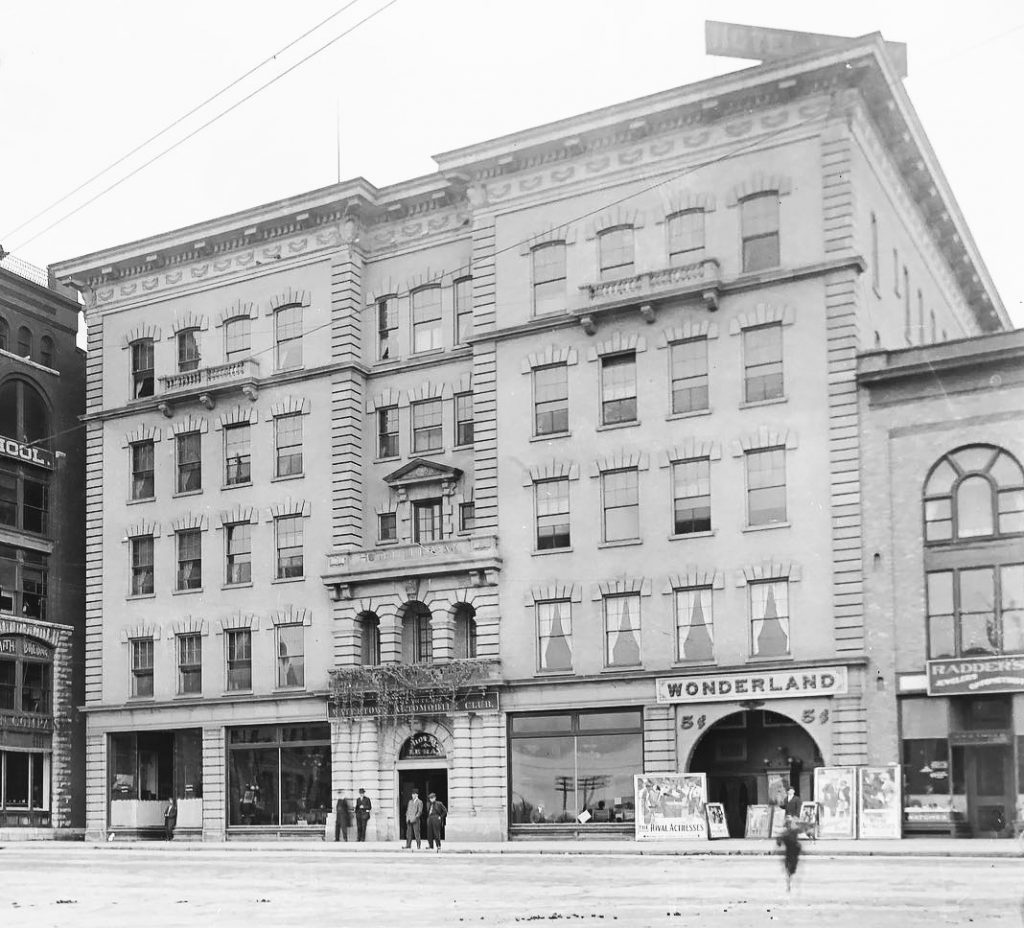
By the summer of 1906, the hotel was nearing completion when the Watertown Daily Times noted it “Will be a model Hostelry” in their July 28th article–
With the new Hotel LeRay added to its number of already fine hotels, Watertown will be a very Mecca for travelers.
At present it can be seen that the new hotel is one of the finest buildings structurally and architecturally ever erected in this city, but to appreciate what the interior will be as to decorations, convenience and general design, the completed hotel must be seen, or at least the architect’s plans and builder’s specifications. In general it is enough to say that the LeRay will be second to no hotel of its size in the country.
It has five stories in front and six in back, is of slow burning construction and is built of Watertown sand brick and trimmed with Indiana sand stone. A very practical and sightly fire escape has been erected on the sides and back, affording sufficient and safe egress should occasion demand its use.
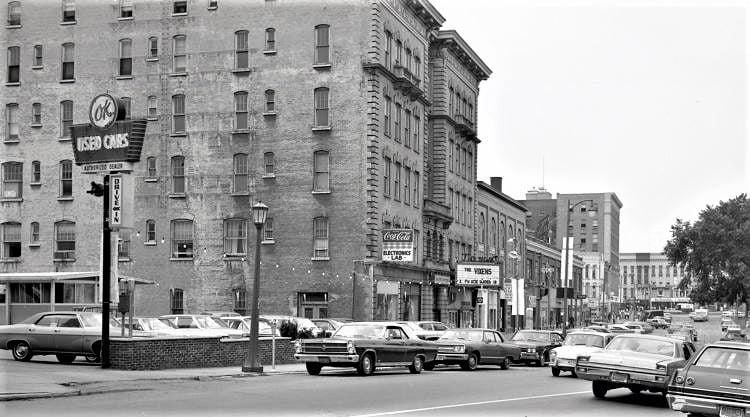
The building’s lobby would be finished in golden quartered oak with matching pillars, while a grill room would be located near the rear, also finished in golden oak and lighted by a glass skylight (see the photo in the gallery.) The building would also be fitted with a hydraulic elevator, a dining room on the second floor facing Public Square and 93 guest rooms.
Before Hotel LeRay opened for business, Watertown’s first “electric theater” opened in the name of Wonderland. The five-cent theater would be managed by J. M. Mullin, giving afternoon and evening entertainment to the public in the form of nickelodeons as well as one of Watertown’s most popular singers, Bruce Wainman.
In another decade, the Olympic Theater would open on the other side of the Mohican Building. The enterprising owners, the Papayanakos Brothers, would remodel the Wonderland Theater into the Palace Theater as part of their growing portfolio of movie theaters in the city, which also included the Liberty Theater on Court Street at one point as well. The Palace Theater later became the Town Theater in 1949.
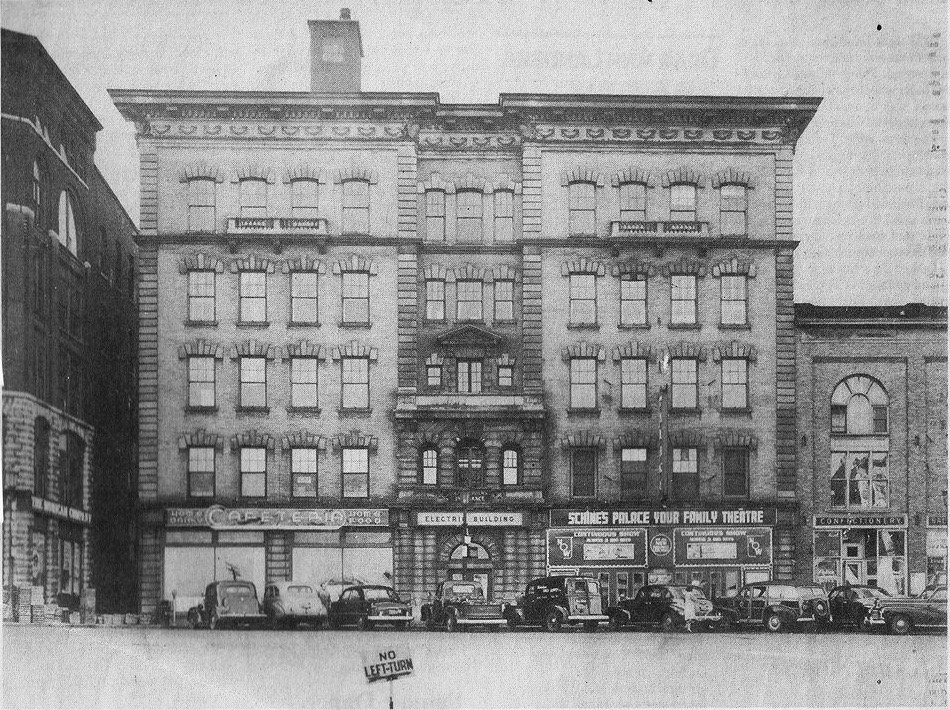
On January 24, 1907, Hotel LeRay would finally open to the eager public. According to the Times report of the day’s events–
The doors of the big new Hotel LeRay at the east end of Public Square were thrown open to the public this morning. Throughout the day the lobby, cafe, grill and corridors were thronged with people inspecting the house. On every hand were heard expressions of commendation for the manner in which the hotel had been built, finished and furnished.
Despite the rave reviews, Hotel LeRay would prove to be an unsuccessful venture and be purchased by Mrs. Bertrand Taylor in 1915. She would, in turn, lease it to the Hotel Woodruff Co. The Times would, interestingly enough, report that “In 1922, the LeRay Hotel under Woodruff ownership closed. It was rebuilt to house the Headquarters of the Northern New York Utilities, then owned by J. B. Taylor and because of this took the name of the last 50 years.” J. B. Taylor, at the time in 1922, owned the Woodruff Hotel as well, which he remodeled substantially in 1920. Mrs. Bertrand Taylor was, of course, J. B. Taylor’s sister-in-law.

By the mid-1970s, the city of Watertown was in a precarious situation as the owner of the Electric Building and the Olympic and Town Theaters. However, the Olympic was still being deliberated in the courts. Both theaters had been plagued with obscenity charges dating back to the late 1960s, and movies deemed X-rated, such as Teenage Fantasy, Together, and Doctor, I Am Coming, were playing in them.
The Town Theater, just several years earlier, had played such popular films as “A Hard Day’s Night,” which was forced to close in 1972. The following year the Daily Times lamented about “Pigeon droppings and years of slime” running of the old Electric Building and vacated Town Theater, signaling the approaching end of days for the building.
In December of 1975, the city requested bids for the demolition of the Woodruff Hotel and alternate prices for the Electric Building. Northern Demolition would be awarded the $198,000 contract to bring both buildings down. The Woodruff demolition would begin in March of 1976, with the Electric Building meeting the wrecking ball the following month.
